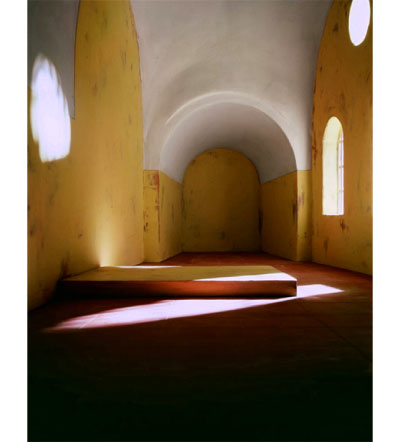
Luxor #3, 2007, James Casabere. All images by © James Casebere Courtesy: Sean Kelly Gallery, New York
Most of the works at the 2010 Whitney Biennial, on view now through May 30, are mixed-media pieces that have strong ties to performance art, combining elements of installation, dance, music, theater, and video. One featured artist whose work falls far from these categories is photographer James Casebere. Amid the visual and literal noise of the exhibit, his two giant digital chromogenic prints, each about six feet by eight feet, possess a classical stillness and quiet subversiveness.
For more than thirty years Casebere has constructed scaled paper models of existing buildings and photographed them from naturalistic points of view, in the same way that an architectural model-maker would. While an architect constructs models to anticipate what a structure will be, Casebere commemorates what a structure has been. In the structures he chooses to commemorate, and in the tone of the commemoration, his work offers pungent political references. He has based works on contemporary American prisons, European mosques, Caribbean plantations, and the Reichstag. The models in many of his recent photographs depict darkly-lit basement spaces flooded with water, images with nightmarish, apocalyptic overtones.
At first glance the two photos on display at the Biennial, Landscape with Houses (Dutchess County NY) #1″ and “#2,” seem cheerfully apolitical.




 Facebook
Facebook Permalink
Permalink Digg
Digg Reddit
Reddit LinkedIn
LinkedIn StumbleUpon
StumbleUpon Tumblr
Tumblr

